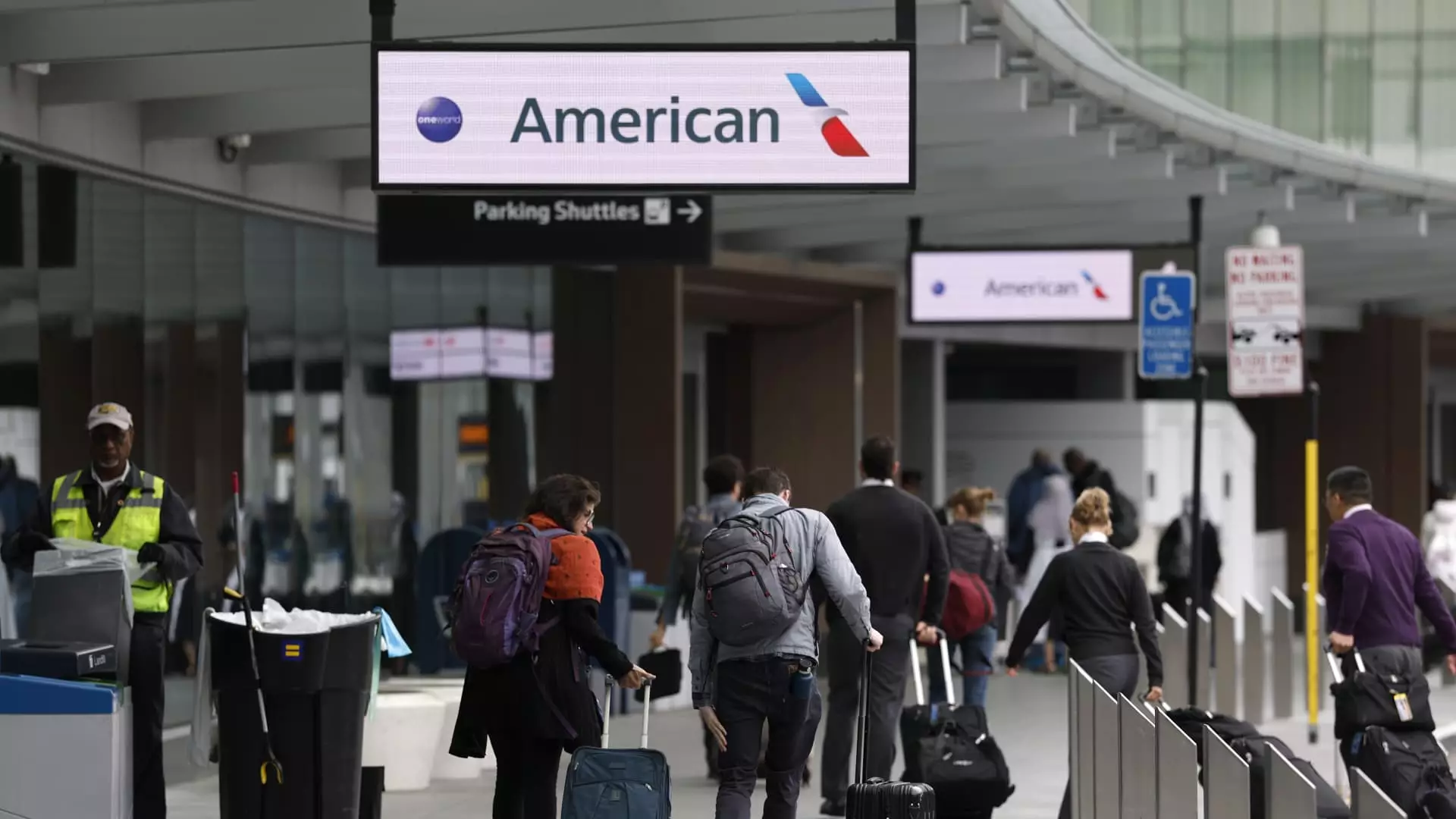In recent earnings reports, airline CEOs faced Wall Street with a somber reality: passenger demand is not as robust as anticipated for 2025. The optimism expressed at the year’s outset has given way to caution, as leaders in the airline industry address the realities of a shifting economic landscape. American Airlines CEO Robert Isom articulated a moment of collective hesitation in the travel sector, pointing to rising turbulence fueled by unpredictable market forces, a product of former President Trump’s fluctuating tariff strategies, and overarching economic ambiguity. The fundamental question remains—how will consumers approach discretionary spending on travel in the face of such uncertainty?
The reluctance to book flights is deeply rooted in consumer psychology. When hard-earned money is at stake, the apprehension surrounding the economy can overshadow the desire for a vacation. Airlines, which once basked in high-demand forecasts, are now facing a surplus of available seats—a precarious predicament that could lead to significant financial repercussions if not adequately addressed.
Capacity Cuts: A Response to Economic Disorder
Following the current trends, major airlines like Delta, Southwest, and United are instituting capacity reductions, signaling a retrenchment in their growth forecasts. Initially eager about a strong summer travel season, these carriers now navigate a headwind of uncertainty and have retracted financial outlooks for 2025. This cautious approach stems from the collective acknowledgment that the current economic climate is unpredictable at best. United Airlines even presented dual financial scenarios regarding a potential recession, showing a pragmatic strategy to adapt to adverse conditions while hoping to retain profitability.
The downturn in air travel has prompted airlines to adjust ticket prices downward, evidenced by a reported 5.3% drop in airfare compared to last year as per the Bureau of Labor Statistics. This adjustment seeks to fill the vacant seats that threaten airline margins. The industry is caught in a paradox where, despite increasing ticket availability, the demand fails to meet expectations, particularly for business travel—a segment that historically provides airlines with higher revenues due to last-minute bookings.
The Corporate Travel Conundrum
As economic insecurity looms, corporate travel has faltered, extending the strain on airline profits. Analysts assert that uncertainty in the economy translates directly into reduced corporate travel expenditures. Conor Cunningham, a travel and transportation analyst, warns that businesses cut travel spending first when faced with financial unpredictability. Sequentially, this exacerbates the overall slowdown in the travel sector, where growth expectations now remain tempered.
Delta’s CEO Ed Bastian reported a promising rise in corporate travel early in 2025, only for the trend to plateau shortly thereafter. It’s a troubling sign, given that business travelers typically carry less price sensitivity and have the flexibility to book last-minute—traits that make them invaluable to airline profitability strategies. However, with government travel also taking a hit due to budget constraints imposed during the Trump era, airlines are increasingly challenged to fill planes.
Long-Term Implications for Airline Profitability
The ongoing decline in ticket prices, motivated by the surplus of seats, signals a critical inflection point for the airline industry. Alaska Airlines recently admitted that demand has not collapsed but acknowledged that it has adjusted fares to strategize its way through the turbulence. CFO Shane Tackett noted that the competitive pricing environment is not as robust as in late 2022, which accentuates the financial vulnerability airlines face.
While international travel continues to thrive, domestic airlines are left to contend with various economic pressures that threaten their operational viability. Capturing consumer confidence amidst these challenging conditions is paramount. As Isom stated, establishing certainty within the economy could yield a rapid recovery for the travel sector. However, until fundamental economic concerns are addressed, the airline industry’s future remains enshrouded in uncertainty. The question stands: can airlines navigate these choppy skies and emerge unscathed, or will they be forced to recalibrate their business models in a diminished travel landscape?
In the wake of fluctuating demand and changing consumer behaviors, airlines must remain agile, adapting to both the economic climate and the shifting sentiments of travelers to ensure their survival in this unpredictable environment.


Leave a Reply